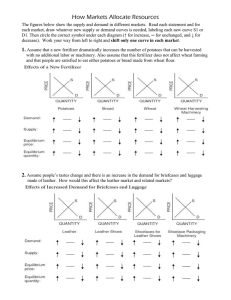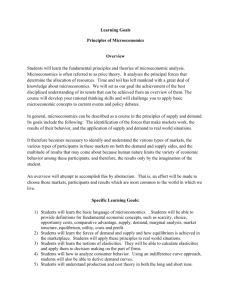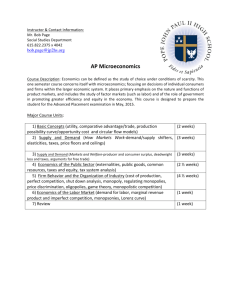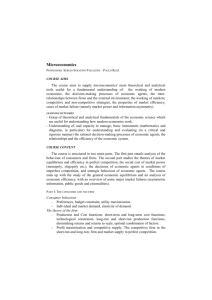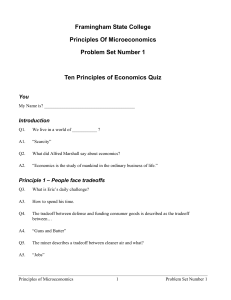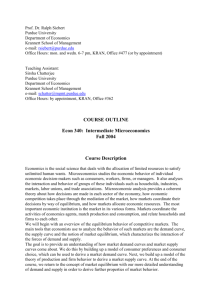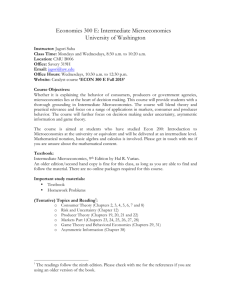How Markets Allocate Resources
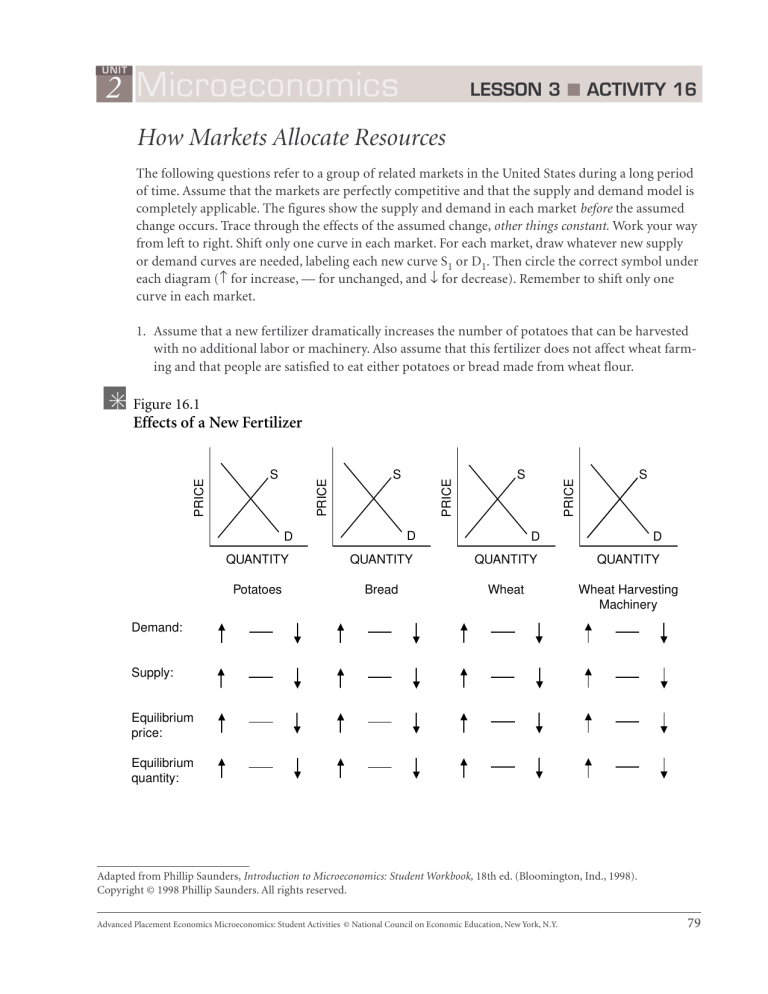
UNIT
2 Microeconomics
LESSON 3 ACTIVITY 16
How Markets Allocate Resources
The following questions refer to a group of related markets in the United States during a long period of time. Assume that the markets are perfectly competitive and that the supply and demand model is completely applicable. The figures show the supply and demand in each market before the assumed change occurs. Trace through the effects of the assumed change, other things constant.
Work your way from left to right. Shift only one curve in each market. For each market, draw whatever new supply or demand curves are needed, labeling each new curve S
1 or D
1
. Then circle the correct symbol under each diagram (
↑ for increase, — for unchanged, and
↓ for decrease). Remember to shift only one curve in each market.
1. Assume that a new fertilizer dramatically increases the number of potatoes that can be harvested with no additional labor or machinery. Also assume that this fertilizer does not affect wheat farming and that people are satisfied to eat either potatoes or bread made from wheat flour.
Figure 16.1
Effects of a New Fertilizer
S S S S
D
QUANTITY
Potatoes
D
QUANTITY
Bread
D
QUANTITY
Wheat
D
QUANTITY
Wheat Harvesting
Machinery
Demand:
Supply:
Equilibrium price:
Equilibrium quantity:
Adapted from Phillip Saunders, Introduction to Microeconomics: Student Workbook, 18th ed. (Bloomington, Ind., 1998).
Copyright © 1998 Phillip Saunders. All rights reserved.
Advanced Placement Economics Microeconomics: Student Activities © National Council on Economic Education, New York, N.Y.
79
UNIT
2 Microeconomics
LESSON 3 ACTIVITY 16
(continued)
2. Assume people ’ s tastes change and there is an increase in the demand for briefcases and luggage made of leather. How would this affect the leather market and related markets? Draw the new curves and circle the appropriate symbols in all four markets.
Figure 16.2
Effects of Increased Demand for Briefcases and Luggage
S S S S
Demand:
Supply:
Equilibrium price:
Equilibrium quantity:
QUANTITY
D
Leather
QUANTITY
D
Leather Shoes
QUANTITY
D
Shoelaces for
Leather Shoes
QUANTITY
D
Shoelace Packaging
Machinery
80
Advanced Placement Economics Microeconomics: Student Activities © National Council on Economic Education, New York, N.Y.
UNIT
2 Microeconomics
LESSON 3 ACTIVITY 16
(continued)
3. Assume that a heavy frost destroys half the world ’ s coffee crop and that people use more cream in coffee than they do in tea.
Figure 16.3
Effects of a Loss of Coffee Crop
S S S S
QUANTITY
D
Coffee
QUANTITY
D
Tea
QUANTITY
D
Cream
QUANTITY
D
Automatic Coffee
Makers
Demand:
Supply:
Equilibrium price:
Equilibrium quantity:
Advanced Placement Economics Microeconomics: Student Activities © National Council on Economic Education, New York, N.Y.
81
UNIT
2 Microeconomics
LESSON 3 ACTIVITY 16
(continued)
4. Assume people ’ s tastes change in favor of colored sports shirts, which are worn without neckties, and against white dress shirts, which are worn with neckties and tie clasps.
Figure 16.4
Effects of a Shift to Sports Shirts
S S S S
QUANTITY
D
Sport Shirts
QUANTITY
D
Dress Shirts
QUANTITY
D
Neckties
QUANTITY
D
Tie Clasps
Demand:
Supply:
Equilibrium price:
Equilibrium quantity:
82
Advanced Placement Economics Microeconomics: Student Activities © National Council on Economic Education, New York, N.Y.
